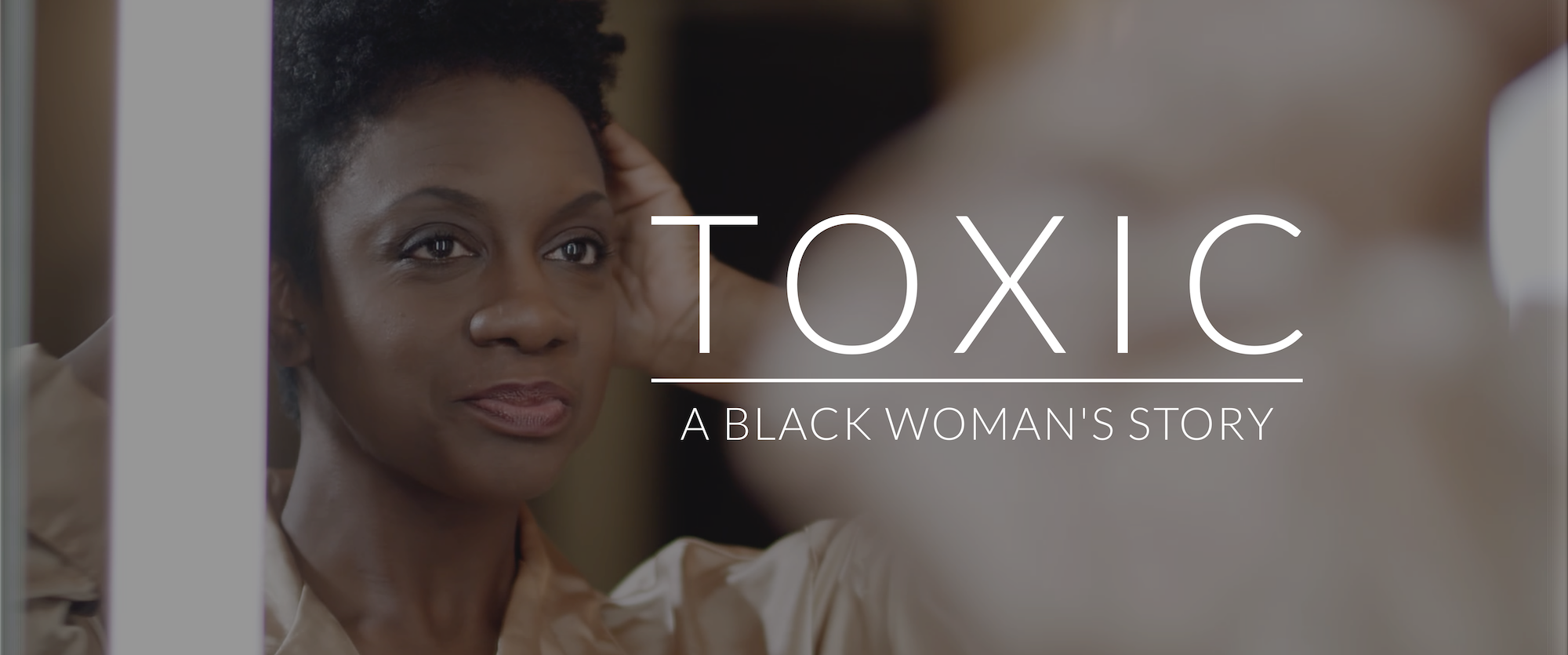Film Use & License Information for Toxic: A Black Woman’s Story
FILM OVERVIEW:
African American families experience every kind of pregnancy loss at a significantly higher rate than any other racial group. According to the Centers for Disease Control and Prevention, black women are twice as likely as white women to experience infant loss. To shed light on this critical issue, First Year Cleveland’s Pregnancy and Infant Loss (PAIL) Committee and the Healthy Neighborhoods Committee of Healthy Cleveland developed a film to examine the impact of racism and stress on African American maternal and infant health outcomes. Funding was provided by First Year Cleveland’s Pregnancy and Infant Loss Committee. The film was directed by Devon Collins, Stimuli Film, Inc. The film was produced by Chris Benninger, Your Story on Film, LLC. Runtime: 26 minutes
GOAL:
To highlight the harmful effects of racism and toxic stress on African American maternal and child health outcomes.
OBJECTIVES:
Raise awareness about racism that will facilitate a change in beliefs, attitudes, and behaviors among social service providers, health care providers, and systems.
Examine the harmful effects of race-related stress on the health and well-being of African American women and their families during pregnancy.
Identify strategies to decrease high infant death rates and improve care for African American women, men, and babies.
PROCEEDS:
The proceeds from Toxic: A Black Woman’s Story will provide healing support resources for families in Cuyahoga County (the county in which this film was produced) who have experienced miscarriage, stillbirth, or the loss of a baby before age one.
DISCUSSION GUIDE:
In partnership with Debra Adams Simmons, Executive Editor for Culture at National Geographic, the Pregnancy and Infant Loss and Healthy Neighborhoods Committees developed a discussion guide to accompany the film. The purpose of the guide is to:
Facilitate meaningful discussions about the impact of racism, stress, and biases as it relates to maternal and child health outcomes.
Encourage participants to engage in self-reflection and awareness.
Examine how systems and institutions can significantly impact health outcomes.
LICENSE:
Your purchase of the film comes with a Digital Site License + Public Performance License, a broad license package that holds incredible value with few restrictions.
About the Digital Site License + Public Performance License Package:
The Digital Site License allows your organization to host Toxic: A Black Woman’s Story as a streaming video file on your digital server, file sharing platform, or website, so long as you can ensure password-protected access to the film is restricted to members of your organization only. Members of your organization can watch the film and view the discussion guide, on demand, via secure, password-protected access. This license is granted “in perpetuity.”
The Public Performance License allows for unlimited public performances and is not bound by location. This license can be used for organizational screenings, trainings, classroom use, and educational use. This license is granted “in perpetuity.” This license does NOT allow for the charging of an admission fee. If you plan on charging an admission fee, please contact us to discuss further, as we can tailor a license to meet your needs.
YOUR PURCHASE:
Your downloadable film package will be e-mailed to you with the following contents:
A Discussion Guide PDF - furnished as a .PDF attachment
A Film Use & License Information PDF - furnished as a .PDF attachment
A Link to Download the Film - a password-protected, time-sensitive link to download your own digital copy of Toxic: A Black Woman’s Story as an HD video file
VIDEO FILE DOWNLOADING INSTRUCTIONS:
Check email - Upon purchase, you will receive an email with a password-protected, time-sensitive link to download your own digital copy of Toxic: A Black Woman’s Story as an HD video file.
Click link and enter password - Click the link in the email and enter the password to access your video file.
Download the video file - Click the “Download” button on the lower right beneath the video. The "HD 1080p" option is typically the best option for presentations. Select this option from the "Download" list. Your file should begin downloading.
Be sure to save the video file - Be sure that your video file is saved to a computer, flash drive, hard drive, or shared folder prior to the video download link expiration. After the date of link expiration, you will not have access to the original link and another link will not be re-issued.
VIDEO FILE SHARING INSTRUCTIONS:
Because your purchase of the film comes with a Digital Site License, you can also have your organization’s dedicated webmaster/tech support staff member upload the film and companion discussion guide to your organization’s own dedicated digital server, file sharing platform, or website, so long as your organization can ensure the film and discussion guide will remain password-protected and shared with members of your organization only.
For example, a university purchasing this license can share the password-protected video and discussion guide with all students, faculty, and staff of the university by way of its own secure file-sharing platform. The video file and companion discussion guide must be password protected.
VIDEO FILE PRESENTING INSTRUCTIONS:
Download video file prior to presenting - In the interest of not relying on internet connectivity, presenters must download the video file prior to presenting (see “Video File Downloading Instructions” contained in this document).
Test playback of film - After the video download completes, presenters should be able to playback the film on their computers. Alternatively, they can move and/or copy the video file to a flash drive and play the film on an alternate computer. Presenters should always test playback of the video file at least 1 week prior to presenting to allow for technical troubleshooting. The test should be conducted on the exact devices (i.e. computer, projector, speakers) that will be used for the screening.
FILM DISCUSSION:
The film and discussion guide are educational tools designed to foster conversation and connection about African American maternal and child health. It is highly recommended that all screenings include time for a discussion immediately following. Facilitators should be knowledgeable of the film's key themes (i.e. racism, equity, African American maternal and child health) and experienced in facilitating sensitive discussions.
COPYRIGHTED MATERIAL:
Toxic: A Black Woman’s Story and its accompanying resources are protected by copyright and other applicable laws in the United States and other nations and may not be duplicated, distributed, re-broadcast, or used in any other manner outside of the rights associated with the purchaser’s license without the expressed written consent of the copyright owner.
ADDITIONAL RESOURCES:
Toxic: A Black Woman’s Story Website
www.toxicshortfilm.com
First Year Cleveland Website
www.firstyearcleveland.org
Pregnancy and Infant Loss (PAIL) Committee Website
www.pailconnect.org
Healthy Cleveland Website
www.healthycle.org
FOR QUESTIONS:
Please fill out the contact form here.

